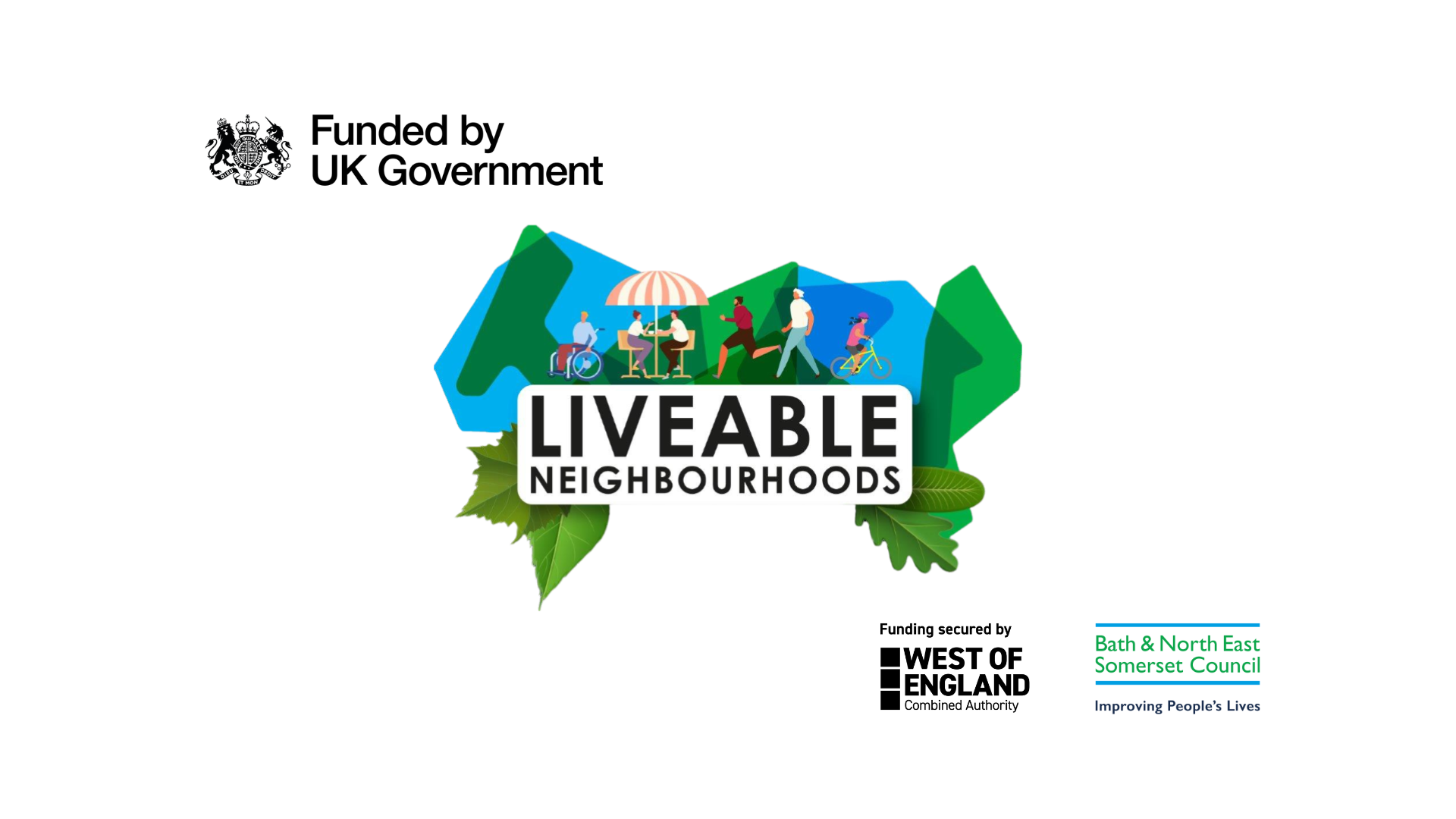Date published: 2024-09-23 | Category: Roads, travel and transport, Liveable Neighbourhoods

Bath & North East Somerset Council has welcomed a decision to fund its Liveable Neighbourhood schemes, which were put forward in a full business case to the West of England Mayoral Combined Authority.
At its meeting on September 20 the combined authority agreed funding following the council’s submission of a detailed report, which set out a range of interventions, drawn up by the council and communities, for 11 Liveable Neighbourhoods.
Under the Liveable Neighbourhood (LN) programme, the council aims to reduce the impacts associated with excessive traffic in residential areas, such as through traffic, congestion, and speeding, and to create environments where it is easier, safer, healthier, and more attractive to walk, wheel and cycle. Currently 42 percent of all journeys in Bath are under 3km and in private vehicles.
Councillor Manda Rigby, cabinet member for Highways, said: “I welcome the investment and endorsement which was given by the West of England Mayoral Combined Authority for our Liveable Neighbourhoods scheme.
“Our aim is to create a choice of healthier, safer active travel routes for people to get around Bath and reduce the need for short car journeys. If we are successful, then Liveable Neighbourhoods would also support the council’s wider aims to tackle the climate emergency.
“Following Friday’s decision, I would like to reassure residents that we will continue our ongoing engagement with them and with ward councillors, so together we can prioritise the right interventions that will make streets more attractive and where there are issues we will work them through with communities to reach the right balance.”
The council has been awarded the remaining £3.78m of the £5.1m funds originally earmarked for the project from the UK Government’s City Regional Sustainable Transport Settlement fund, plus an additional £1.81m which it estimates it needs to deliver the programme.
The 11 areas where the council is proposing a package of measures include:
- Church Street and Prior Park Road
- Whitchurch Village and Queen Charlton
- Southlands Area (Weston)
- New Sydney Place and Sydney Road
- Lyme Road and Charmouth Road area
- Lower Lansdown and The Circus
- Temple Cloud
- Pulteney Estate area
- London Road and Snow Hill area
- Entry Hill, Bath
- Chelsea Road area
This includes areas where through-traffic restrictions are now in place, being trialled, or in the pipeline as part of the council’s Liveable Neighbourhood programme.
The types of interventions included in the full business case include, among others:
- Improvements to pavements and footways, including the introduction of continuous crossings on side roads
- Improvements to crossings and traffic signals
- Through-traffic restrictions and traffic calming where through-traffic, vehicle congestion and speeding is an issue
- The narrowing of junctions to slow approaching traffic
- Improved cycle infrastructure
Original plans were to develop 15 LNs during this first phase, but early cost estimates required the council, in discussion with the relevant ward councillors, to reduce the scope to 11 areas with fewer interventions to meet the available funding.
The areas not going forward as part of this business case are Mount Road area, Oldfield Lane and the Avenues area, Morris Lane and Bannerdown Road area, and the Egerton Road and Cotswold Road area but the council hopes to progress more of the ideas put forward by communities in all 15 areas either through future funding or via other projects.
The West of England Mayoral Combined Authority is responsible for distributing the UK Government’s City Regional Sustainable Transport Settlement (CRSTS) funds to viable schemes in the region. Its members, including the West of England Mayor and leaders from the Mayoral Combined Authority’s three constituent councils: Bath & North East Somerset Council, Bristol City Council and South Gloucestershire Council.
Details of the committee meeting on 20 September are available on the West of England Mayoral Combined Authority’s website.
The Committee’s report on the FBC is on page 45 of the Agenda Report Pack which includes a link to the Liveable Neighbourhood Full Business Case.
More details on the council’s Liveable Neighbourhood programme, including the experimental trials, are available at www.bathnes.gov.uk/liveableneighbourhoods.
Notes to editors
- Earlier Liveable Neighbourhood engagements included a formal public consultation on LNs in autumn 2020, an invitation to ward councillors to apply for LNs in spring 2021 (which resulted in 15 priority areas being selected); a public engagement on the 15 areas in autumn 2021; and community co-design workshops conducted in spring/summer 2022.
- During 2023/24, the council shortlisted these ideas against a range of technical and practical criteria and, in discussion with ward councillors, drew up preliminary designs in all 15 areas with a more limited range of measures. Once early cost estimates were produced, the scope of the project was reduced to 11 areas to meet the available funding .
- In Southlands, Church Street and Queen Charlton, through-traffic restrictions were trialled as pilot schemes in 2022/23 and have now been made permanent. In these areas, the council is proposing a range of improvements to complement these existing pilots.
- In New Sydney Place and Sydney Road, a through-traffic restriction is currently being trialled – the consultation closes on October 3. Further trials are due to be installed in the Lower Lansdown area. the impacts from these trials will be monitored and this will include traffic and air quality monitoring as well as a a full six-month public consultation.
- For more information on current trials go to: https://beta.bathnes.gov.uk/experimental-etro-trials
- More information on the development of LNs is available at www.bathnes.gov.uk/liveableneighbourhoods
